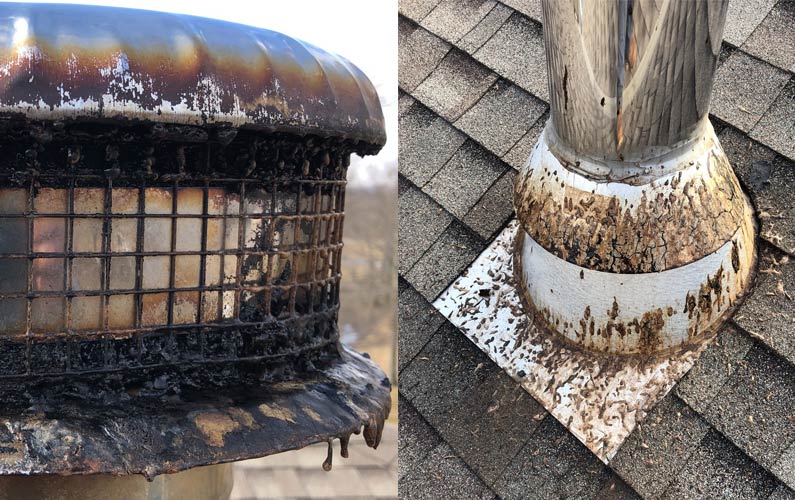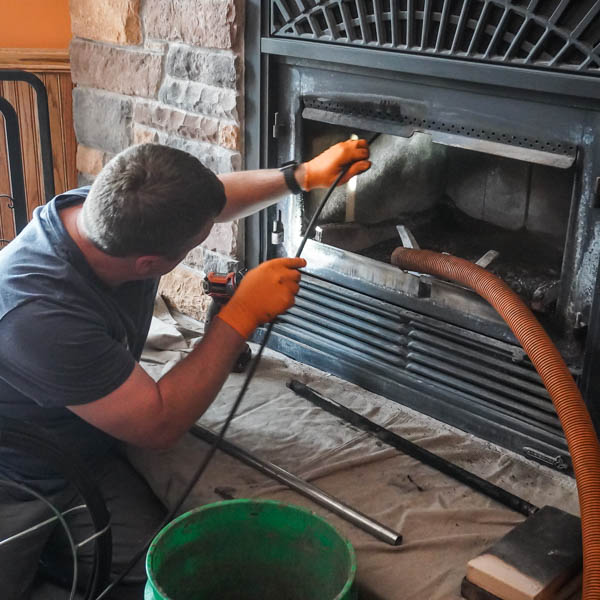Choose United States for Chimney Clean Company Fremont: Unrivaled Expertise, Impressive Outcomes
Choose United States for Chimney Clean Company Fremont: Unrivaled Expertise, Impressive Outcomes
Blog Article
Why Normal Chimney Cleaning Is Crucial for Home Safety And Security
Normal chimney cleansing is an usually forgotten yet important facet of keeping a protected and risk-free home atmosphere. While it may not be the most interesting or glamorous job on your to-do list, ignoring smokeshaft upkeep can have severe repercussions. The buildup of residue and creosote in your chimney can position a substantial fire danger, while poor ventilation can cause the potentially lethal risks of carbon monoxide gas poisoning. Additionally, routine chimney cleaning can aid expand the lifespan of your smokeshaft, saving you from pricey fixings or substitutes down the line. Exactly how exactly does smokeshaft cleaning contribute to home safety? Let's explore the factors behind this important upkeep task and find the pointers for appropriate chimney care that every property owner must recognize.
Value of Regular Chimney Cleansing
Normal chimney cleansing is important for preserving a efficient and risk-free home atmosphere. Over time, creosote, an extremely flammable compound, builds up inside the smokeshaft.
In addition to protecting against fires, regular smokeshaft cleaning additionally makes sure the efficient operation of your home heating system. When creosote gathers, it limits the airflow through the smokeshaft, leading to poor burning and lowered heating efficiency.
In addition, a tidy chimney promotes excellent interior air top quality. As the chimney comes to be stopped up with creosote and particles, it can impede the appropriate venting of hazardous gases, such as carbon monoxide. These gases can leak into your home, posing a considerable health and wellness risk to you and your family. Regular chimney cleansing makes sure that the ventilation system is clear and functioning correctly, protecting against the buildup of hazardous gases.
Fire Risk: Build-up of Soot and Creosote
The accumulation of soot and creosote inside the smokeshaft presents a significant fire danger, as it can stir up and create a potentially destructive chimney fire. Residue is a black, carbonaceous substance that is developed when timber or fossil gas are shed. It contains fine bits that can quickly become airborne and resolve inside the chimney. Gradually, these particles build up and create a layer of residue. Creosote, on the various other hand, is a highly combustible and sticky substance that is produced when timber or nonrenewable fuel sources are burned at lower temperatures. It is a result of insufficient burning and can comply with the internal walls of the chimney.
Both soot and creosote are very flammable. When a fire is lit in the fireplace or cooktop, the warm and fires rise the smokeshaft. These materials can spark and create a chimney fire if there is a considerable build-up of residue or creosote. The extreme warmth created during a chimney fire can trigger the chimney to split or collapse, bring about a potential house fire. On top of that, the fires and stimulates from the smokeshaft fire can escape via the chimney cap and ignite the roof covering or surrounding combustible products.

Routine chimney cleansing is vital to eliminate the build-up of soot and creosote and lower the threat of a smokeshaft fire. An expert chimney sweep will make use of customized brushes and devices to thoroughly clean the smokeshaft, eliminating any collected particles. By keeping the smokeshaft cost-free and clean from soot and creosote, house owners can guarantee the safe and effective procedure of their fireplace or cooktop, while likewise securing their home from the dangers of a smokeshaft fire.
Poor Air Flow and Carbon Monoxide Gas Threats
Insufficient ventilation in smokeshafts can position serious risks of carbon monoxide gas poisoning. Carbon monoxide (CO) is an anemic, odor-free gas that is produced when gas such as gas, oil, or wood are melted. When chimneys are not properly ventilated, CO can accumulate and seep into the living spaces of a home, leading to possibly life-threatening situations.
Among the primary sources of bad smokeshaft ventilation is the buildup of debris, such as soot and creosote, which can block the flue and restrict the circulation of air. This can lead to insufficient burning and the manufacturing of greater levels of CO. Additionally, a smokeshaft that is not consistently cleansed can have an accumulation of various other blockages, like bird nests or leaves, additional restraining the appropriate ventilation of damaging gases.
The impacts of carbon monoxide poisoning can be subtle and quickly mistaken for various other illnesses, such as the flu. Signs and symptoms may consist of frustrations, dizziness, nausea or vomiting, exhaustion, and complication. Long term direct exposure to high levels of CO can bring about unfamiliarity, body organ damage, and even fatality.
Normal smokeshaft cleansing and examination are critical in preserving correct air flow and minimizing the danger of carbon monoxide poisoning. By getting rid of any type of blockages and making certain that the flue is clear, house owners can appreciate a healthy and balanced and secure living setting. It is recommended to have chimneys inspected and cleansed at least yearly by a specialist chimney sweeper to make sure optimum security and comfort.
Prolonging the Life Expectancy of Your Chimney
To guarantee the long life of your chimney, proper upkeep and care are important. Routine smokeshaft cleansing is not only important for home safety and security yet additionally for prolonging the lifespan of your smokeshaft. Gradually, creosote, debris, and residue can build up inside the smokeshaft, leading to different issues that can substantially reduce its life-span.
One of the primary advantages of normal chimney cleaning is the prevention of chimney fires. If not eliminated, it can construct up inside the chimney and ignite, triggering a harmful and potentially destructive smokeshaft fire.
Additionally, normal smokeshaft cleansing likewise assists to avoid obstructions. When debris, such as fallen leaves, branches, or perhaps little pets' nests, block the chimney, it can impede proper ventilation and air movement. This can bring about an accumulation of harmful gases, such as carbon monoxide, inside the home. By maintaining the chimney tidy and clear, you can make certain correct ventilation and decrease the danger of carbon monoxide poisoning.
In enhancement to stopping blockages and fires, regular smokeshaft cleaning can likewise identify and deal with any possible damages or degeneration. By evaluating the chimney throughout the cleaning procedure, you click over here can capture any type original site of very early indications of fractures, leakages, or structural concerns. Motivate fixings can be made to avoid more damages and prolong the life-span of your chimney.
Tips for Proper Chimney Maintenance
For reliable smokeshaft upkeep, it is very important to follow a few vital tips to ensure the long life and safety of your chimney. These ideas will not only help you keep the efficiency of your chimney but additionally reduce the danger of chimney fires and various other prospective dangers.
First of all, it is vital to have your chimney examined and cleaned by a professional smokeshaft sweep at least yearly. A specialist will be able to recognize any kind of possible problems such as creosote build-up, animal nests, or structural damages that can posture a risk to your chimney's efficiency and security.
Along with annual inspections, it is crucial to regularly check and cleanse your chimney's flue and cap. The flue must be free from any type of debris or blockages that could limit air flow or cause smoke to back up into your home. The chimney cap must remain in good problem, safely connected, and complimentary of any splits or damages to avoid unwanted guests such as birds or squirrels from entering your chimney.
Furthermore, it is vital to make use of dry and seasoned wood for burning in your fire place. Damp or eco-friendly timber produces even more smoke and creosote, leading to a higher risk of smokeshaft fires. Furthermore, avoid burning materials such as garbage, cardboard, or treated timber, as they can release unsafe chemicals and harm your smokeshaft.
Last but not least, make sure that your chimney is equipped with a durable spark arrestor to avoid embers and triggers from running away and potentially triggering a fire. Chimney Clean Company Fremont.
Following these suggestions for proper smokeshaft upkeep will aid ensure the security and long life of your chimney and give peace of mind for official source you and your household.

Verdict
Finally, regular smokeshaft cleansing is critical for preserving home safety. The accumulation of residue and creosote can result in fire threats, while poor air flow can raise the danger of carbon monoxide gas poisoning. By frequently cleaning and keeping your smokeshaft, you can expand its life expectancy and make certain the safety of your home and family members. It is essential to comply with correct smokeshaft maintenance tips to stop any prospective dangers.

One of the main benefits of routine smokeshaft cleansing is the avoidance of smokeshaft fires - Chimney Clean Company Fremont. The chimney cap must be in good condition, securely affixed, and complimentary of any fractures or damages to avoid unwanted guests such as birds or squirrels from entering your chimney
Report this page